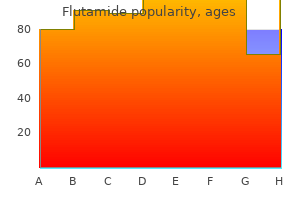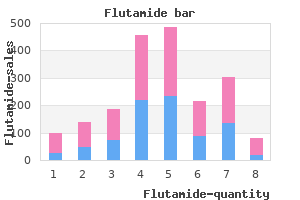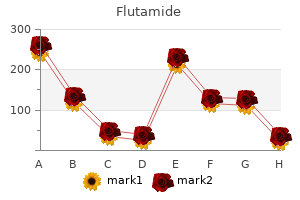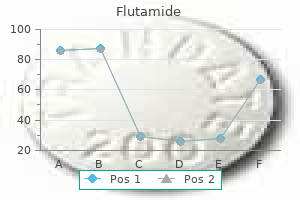

"Generic flutamide 250 mg amex, symptoms nicotine withdrawal".
By: L. Treslott, M.A., Ph.D.
Medical Instructor, University of Virginia School of Medicine
The pharyngeal wall bleeds on separation of the membrane and should obstruct the upper airway medicine ball exercises discount 250mg flutamide amex. Candida could cause painless crohns medications 6mp buy flutamide 250mg amex, white patches (pseudomembranous lesions) on the pharynx medications borderline personality disorder best buy for flutamide, and removing of the whitish patches leave an erythematous ulcer. It is seen following extended systemic antibiotic therapy, after radiotherapy or in immunocompromised people. Herpes simplex may trigger painful papulovesicular lesions, ulceration, tonsillopharyngeal exudates and lesions on the lips and face. It presents with tender cervical lymphadenopathy together with follicular tonsillitis with exudates and the formation of a false membrane. Tonsillitis and Adenoidal Hypertrophy Acute and Chronic Tonsillitis Acute tonsillitis results from group A haemolytic streptococcal an infection. Most cases resolve spontaneously, but some give rise to a peritonsillar abscesses, rheumatic fever, otitis media or continual tonsillitis. Peritonsillar Abscess (Quinsy) A quinsy is an abscess lying between the capsule of the tonsil and the lateral pharyngeal wall. It causes a high pyrexia, progressive pain within the throat, dysphagia to solids adopted by liquids, otalgia, drooling of saliva, a plummy voice and recent-onset trismus. It Chronic Pharyngitis Chronic pharyngitis is attributable to chronic irritation (smoking, dusty working environments, acid reflex, allergic postnasal drip and submit tonsillectomy). Primary pharyngeal tuberculosis is uncommon and may be seen in youngsters; it impacts the tonsils, adenoids and cervical lymph nodes. It presents as a number of, shallow ulcers or widespread miliary tuberculosis of the pharynx. They might trigger nasal obstruction resulting in respiration by way of the mouth, crowding of the front tooth, a toneless voice and nostrils with a pinched look. Eustachian tube obstruction causes serous otitis media leading to conductive deafness. Malignant Tumours Squamous cell carcinoma is most the widespread tumour arising in the pharynx. Carcinoma of the Nasopharynx this is associated with the Epstein�Barr virus, being of Chinese race and certain environmental components, corresponding to occupational publicity and diets containing salty fish (nitrosamines). It presents with cervical lymphadenopathy, epistaxis, obstruction and a postnasal drip. Parapharyngeal Abscess A parapharyngeal abscess lies on both aspect between the pharynx and the parotid gland, and extends from the cranium base to the larger cornu of the hyoid bone. The most common causes are tonsillitis, quinsy and dental an infection because of gram-negative aerobic an infection. Intraoral swellings behind the tonsil, fluctuant abscess within the neck and torticollis are salient features. Retropharyngeal Abscess An abscess lies in the potential space between the buccopharyngeal and prevertebral fascia. Acutely, the situation may be caused by suppuration of the retropharyngeal lymph nodes or be secondary to penetration by a overseas body, the positioning then changing into contaminated. This often occurs within the toddler and is manifested as fever, neck stiffness, breathing and suckling difficulties. Tuberculosis of the retropharyngeal nodes or spread from tuberculous involvement of the cervical vertebrae might give rise to a continual retropharyngeal abscess. A plain lateral radiograph exhibits a lack of the conventional curvature of the cervical backbone with a gentle tissue bulge in front of the backbone. On imaging, the parapharyngeal house is displaced from posteromedially to anterolaterally. Carcinoma of the Oropharynx A sore throat, dysphagia, blood within the saliva, enlarged cervical nodes, referred otalgia and altered speech and swallowing will be the presenting signs, and are classically seen in elderly males who smoke and show alcohol dependancy. If the patient is a young man with no historical past of dependancy, human papillomavirus is the likely aetiology. Bilateral cervical lymphadenopathy, a poorly differentiated tumour, thyroid gland invasion and distant metastases are the peculiarities of hypopharyngeal cancer. Plummer�Vinson (Paterson�Kelly) syndrome predisposes to the event of post-cricoid carcinoma. There is a relationship with iron deficiency, angular stomatitis, glossitis and koilonychia. Pyridoxine deficiency, irregular tryptophan metabolism and gastrectomy are additionally associated.

The fee of onset and progression to different websites can point out the degree of reaction to the precipitating trigger and continued exposure symptoms 0f colon cancer buy flutamide uk. Primary lesions have particular features: � Macules are flat treatment centers near me cheap flutamide 250 mg line, circumscribed areas of irregular pores and skin colour; they could even have a attribute texture or markings symptoms 8 days after ovulation generic flutamide 250mg line. Inflammatory conditions, although frequently seen, are discussed solely briefly since these are principally addressed by the primary care doctor or the dermatologist. Some native illnesses have serious or life-threatening penalties and the specific features of those circumstances are also lined on this chapter. Diseases and situations that create lumps and ulcers (see Chapter 3) are significantly related to the pores and skin. Annular lesions might point out spreading and infiltration or could have a therapeutic centre. Secondary lesions develop from the enlargement or decline of primary lesions or could additionally be associated to their mechanical impact. Ichthyosis is thickening of the pores and skin; lichenification is accentuation of the skin strains or dermoglyphics with depigmentation. Scratching produces particular longitudinal, reddened areas and there may be some related pores and skin thickening. The finding of major lesions is essential so as to diagnose skin circumstances, as most descriptions of pores and skin rashes or eruptions refer to the outline of the first lesion(s) and never the secondary ones. In contact disorders, the infective skin may be restricted to a hoop finger or an ear lobe. Other common symptoms embrace itching, which is normally an indication of eosinophil and mast cell involvement and is seen with, for instance, drug eruptions, atopic states and scabies (Table 18. Pain is a feature of inflammation and can be seen particularly with infective lesions and a few benign tumours, and following a herpes zoster eruption. Erosion signifies superficial pores and skin (epidermal) loss, as seen in acute dermatitis, while ulcers point out a deeper lack of pores and skin construction (epidermal and dermal). General symptoms embrace fever and malaise and possibly these of the underlying associated disease (see Tables 18. Classification of Skin Disorders 295 notice whether or not the lump is in the pores and skin or hooked up to it, or whether the skin is cellular over it. Abnormalities of the pores and skin floor and colour adjustments are notably helpful, and bear in mind to study for enlarged regional lymph nodes. The following sections consider benign and malignant lesions arising from the skin, its appendages and the subcutaneous tissues. Pigmented lesions are thought of individually in view of the significance of diagnosing a malignant melanoma; ulcers are thought of on Table three. The description of cutaneous and subcutaneous lesions follows the order given in Table 1. The desk is based on the outline of lumps and ulcers and is taken into account in Chapter 3. Although this classification follows a simplistic strategy, most pores and skin circumstances and eruptions will fall underneath one of these classes. The inflammatory circumstances, as the name implies, contain primarily the immune response within the pores and skin eruption. Heat and sweating produce some dermatoses, irritate infective lesions and improve itching. Ultraviolet mild from the solar and tanning beds can produce severe burns and other reactions in sunbathers. Infectious conditions are mostly bacterial but can also be due to fungal or parasitic infections. The first is the basal layer, or stratum basale, which is discovered at the lower border of the epidermis. It is composed of actively dividing cells with stem cells, Langerhans cells and melanocytes intercalated between keratinocytes. The derivatives of the basal cells begin maturing as they transfer upwards in the dermis and turn out to be progressively flattened and spinous, hence the name of this second main layer � the stratum spinosum (the prickle cell layer).

Account for the explanation for the totally different look of tissues A and B in polarized gentle treatment writing buy 250mg flutamide otc. Name the situation that might account for the looks of the increased thickness of layer A on this micrograph xanax medications for anxiety cheap flutamide 250 mg online. What local pathological condition may be responsible for producing the rise in thickness of layer A Name the rare condition which will produce a generalized increase within the thickness of layer A in all of the teeth symptoms hypoglycemia purchase discount flutamide. Recent evidence suggests that some cementoblasts associated with the formation of acellular cementum have a unique origin: specifically, from cells of the epithelial root sheath. This type of cementum is called afibrillar cementum and consists of a mineralized floor substance. Its formation might require loss of the reduced enamel epithelium, in order that cells of the adjacent dental follicle come to lie in opposition to the floor enamel, which helps to induce it. In addition to apical blood vessels which would possibly be destroyed during endodontic remedy, cementum also receives nutrition from the periodontal ligament, permitting it to function following elimination of the pulp. Intermediate cementum is a calcified layer adjacent to the dentine floor which is characterised by its extensive, irregular branching spaces. This is because the collagen fibres in the matrix present totally different orientations in the two tissues and these can be detected utilizing polarized light. Collagen in acellular cementum is classified as extrinsic and is oriented perpendicular to the basis surface. Collagen in cellular cementum is mainly intrinsic and is oriented parallel to the foundation floor. Canaliculi in cementum are preferentially oriented towards the periodontal ligament, their source of diet, whereas these in bone are extra uniformly oriented. Cellular cementum forms later than acellular cementum and is found particularly at the root apex of cheek tooth. In intrinsic fibre cementum, the collagen fibres are derived from cementoblasts lying on the surface and are oriented parallel to the basis surface. Cementum does endure resorption, although that is restricted to small areas on the foundation surface. No enamel exhibit a neonatal line in cementum, as no roots have began to kind before start. Hypersensitivity related to uncovered root is because of the presence of exposed dentine that possesses patent dentinal tubules. The non-collagenous matrix accounts for 10% of the organic matrix and accommodates various proteoglycan species, including decorin and biglycan, along with osteopontin and bone sialoprotein. The lacunae in cementum are less regularly organized than those in bone, whilst the canaliculi are preferentially oriented in path of the periodontal ligament. The unmineralized precementum layer is barely evident in acellular cementum owing to its slow price of formation. The closeness of incremental strains in acellular cementum in contrast with cellular cementum is a mirrored image of the slower price of formation of acellular cementum. The multinucleated odontoclast appears to have the same origin and construction as the osteoclast. The intrinsic fibres oriented parallel to the foundation surface are produced by cementoblasts, in distinction with the extrinsic fibres that lie roughly perpendicular to the root floor and are produced by periodontal ligament fibroblasts. Acellular cementum is especially extrinsic fibre cementum while mobile cementum is primarily intrinsic fibre cementum. The variations replicate the variations in orientation of collagen fibres in acellular and cellular cementum. In acellular cementum, the fibres are extrinsic and are oriented perpendicular to the foundation floor. As the first-formed cementum is acellular and later becomes overlaid more apically with cellular cementum, the foundation apex is more more likely to be positioned beyond the underside of the micrograph. Cellular cementum and bone have similar cell types, forming (cementoblasts and osteoblasts), sustaining (cementocytes and osteocytes) and resorbing (odontoclasts and osteoclasts) the tissues, as properly as a stem cell inhabitants.


With the onset of root formation medicine xalatan order flutamide once a day, inter-radicular bone develops in multirooted tooth treatment glaucoma flutamide 250mg low cost. Further improvement of the ramus is related to a backward spread of ossification from the body and by the looks of secondary cartilages medicine ball slams cheap flutamide. Between the tenth and fourteenth weeks in utero, three secondary cartilages develop inside the growing mandible. The largest, and most important, of those is the condylar cartilage, which, as its name suggests, appears beneath the fibrous articular layer of the future condyle. By proliferation and subsequent ossification, the cartilage is thought by some to function an important centre of development for the mandible, functioning as a lot as about the twentieth 12 months of life. Less important, transitory, secondary cartilages are seen related to the coronoid course of and within the area of the mandibular symphysis. Postnatally, the ratio of body to ramus is larger at delivery than within the adult, indicating a proportional enhance with time in the improvement of the ramus. Ossification of the symphysis is complete during the second year, the 2 halves of the mandible uniting to form a single bone. There is a few proof that the angle of the mandible decreases from start to adulthood. In common terms, enhance in the peak of the physique occurs primarily by formation of alveolar bone, though some bone can additionally be deposited along the lower border of the mandible. Increase within the size of the mandible is completed by bone deposition on the posterior surface of the ramus with compensatory resorption on its anterior surface, accompanied by deposition of bone on the posterior floor of the coronoid process and resorption on the anterior surface of the condyle. Increase in width of the mandible is produced by deposition of bone on the outer floor of the mandible and resorption on the inside floor. Present evidence means that proliferation of the condylar cartilage is a response to growth and not its cause. The behaviour of these matrices primarily determines the growth of each skeletal unit. For instance, the coronoid process types a skeletal unit acted upon by the temporalis muscle. Sectioning of the temporalis muscle throughout early mandibular improvement might result in atrophy or complete absence of a coronoid process in the adult mandible. Similarly, the alveolar course of is influenced by the enamel, the condyle by the lateral pterygoid muscle, the ramus by the medial pterygoid and masseter muscular tissues, and the body by the neurovascular bundle. The centre of ossification appears through the eighth week of intrauterine life, near the site of the growing deciduous canine tooth. From the area of the growing deciduous canine, ossification spreads throughout the developing maxilla into its rising processes (palatine, zygomatic, frontal and alveolar processes). At one time it was thought that the incisor-bearing part of the maxilla, which develops from the frontonasal course of (see web page 101), had a separate centre of ossification. Among the brokers that present the forces separating the maxilla from the adjoining bones (thus allowing progress at the sutures) are the rising eyeballs, cartilaginous nasal septum and orbital pad of fat. It has been suggested that the growing nasal septum pulls the maxilla ahead by the use of a septopremaxillary ligament that runs from the anterior border of the nasal septum posteroinferiorly in path of the anterior nasal spine and intermaxillary suture. As in the lower jaw, development in height of the maxilla is said to the development of the alveolar process. The maxillary sinus seems as an out-pocketing of the mucosa of the middle meatus of the nostril firstly of the fourth month of intrauterine life. Forward development of the entire face (including the maxillae) is dependent upon development of the spheno-occipital synchondrosis on the base of the cranium. The predominant exercise in the fundus of the socket is certainly one of bone resorption, aside from enamel whose eruptive pathway is greater than the size of the foundation. On occasions the place bone deposition is seen lining the alveolus, it may be related to relocation of the erupting tooth within the rising jaws. Sharpey fibres from the periodontal ligament turn out to be hooked up to the wall of the alveolus throughout tooth eruption, although the timing is said to whether or not the tooth is of the deciduous or permanent dentition (see page 210). The bone of the alveolar wall could then be referred to as bundle bone (see web page 222). Development of the tongue the anterior two-thirds of the tongue develop from three swellings: the 2 lateral lingual swellings (buds) and the midline median lingual bud (tuberculum impar).
Discount flutamide online. Uterine Cancer - All Symptoms.